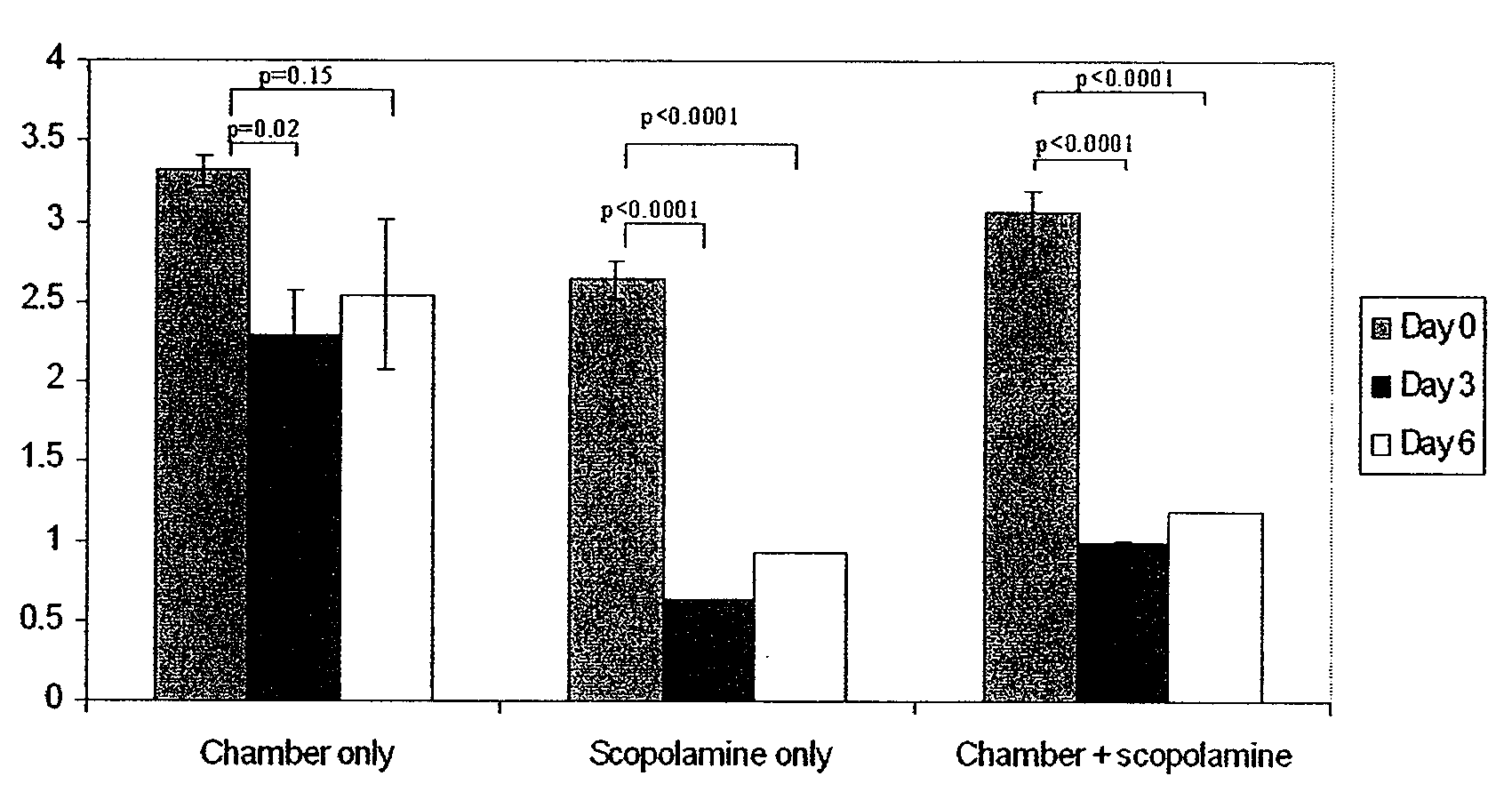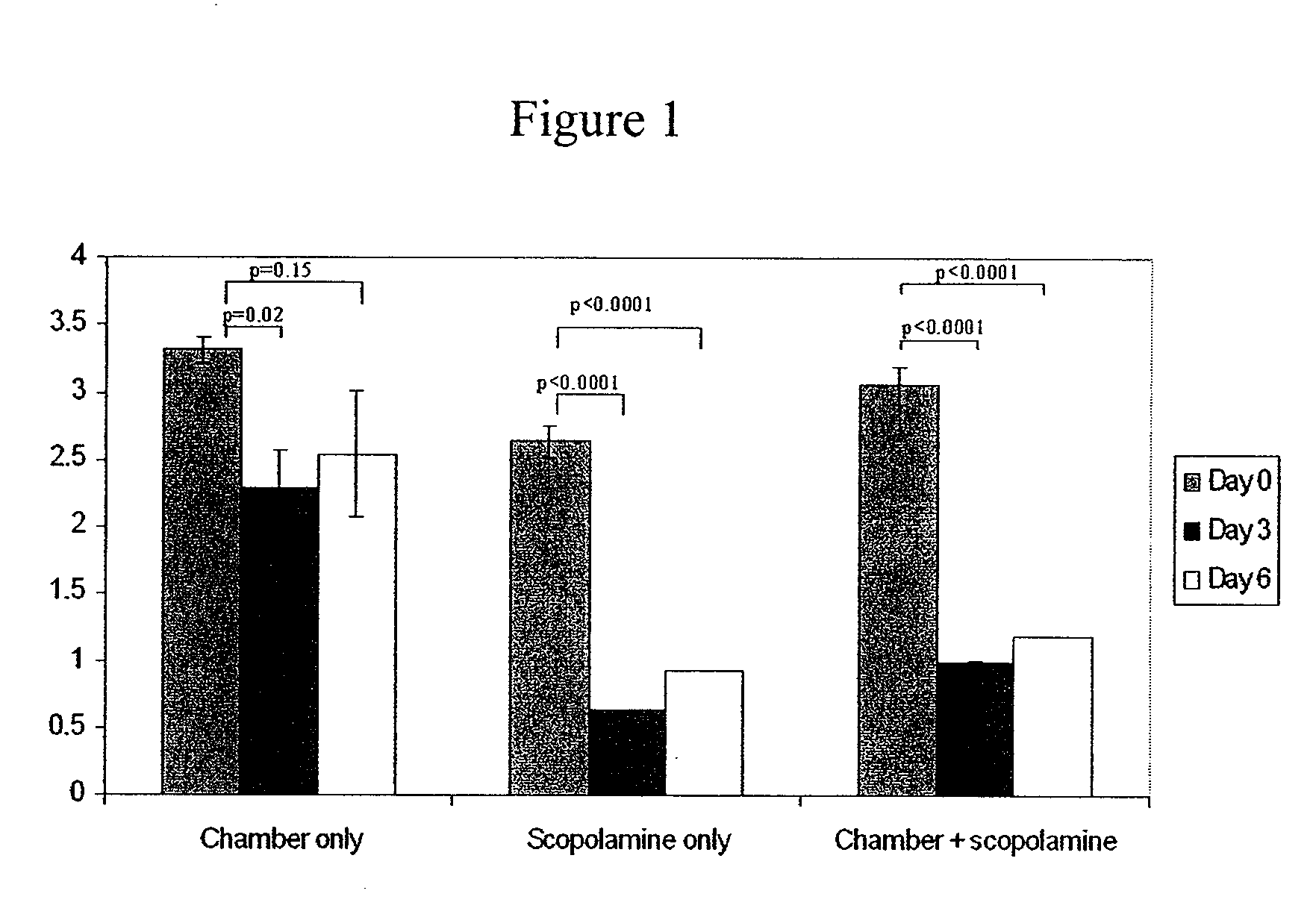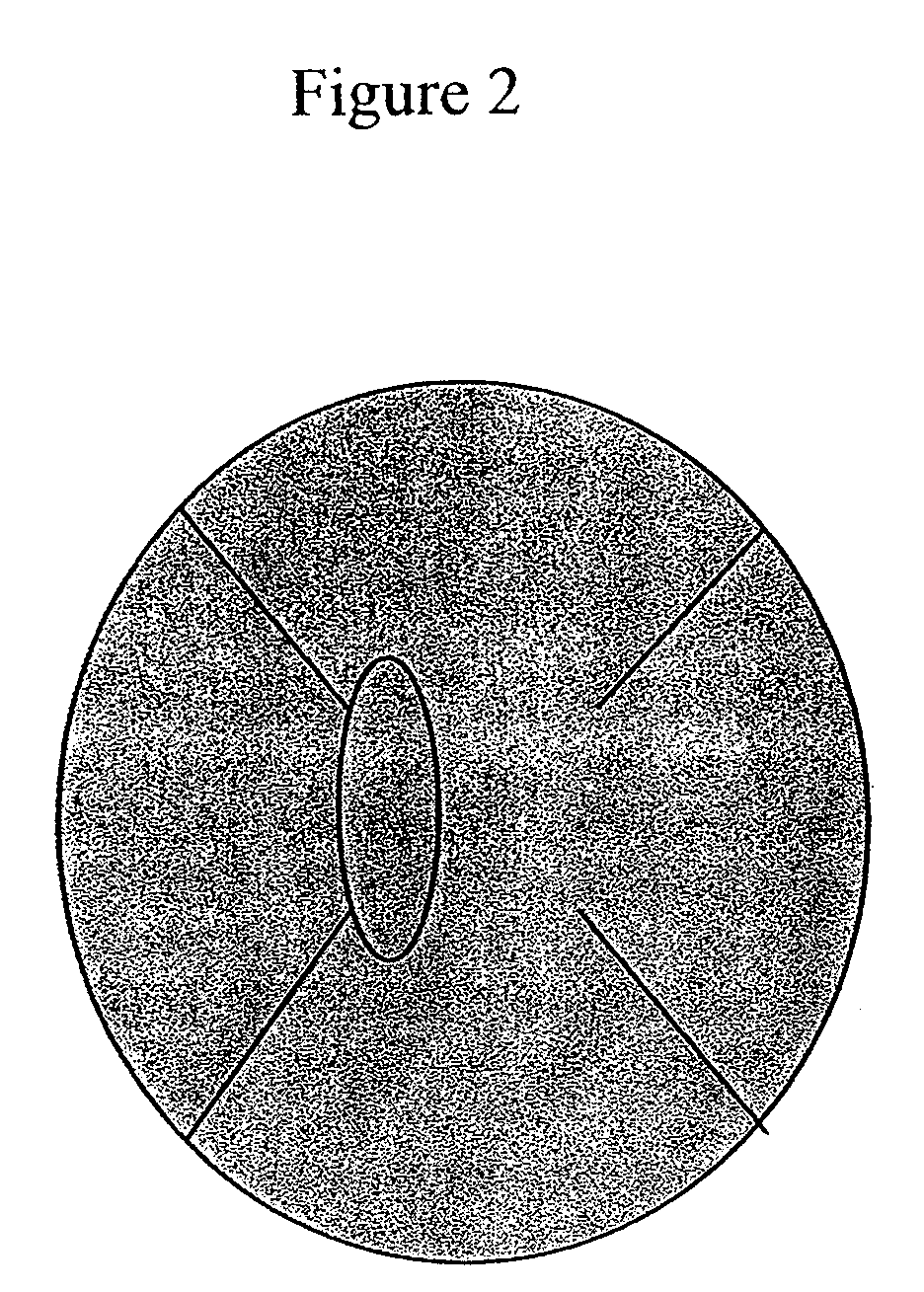Compositions and methods for treating eye disorders and conditions
a technology for eye disorders and conditions, applied in the field of eye conditions and disorders, can solve the problems of decreased functional visual acuity, inability to carry out professional work, driving at night, and inability to read, etc., and achieve the effect of increasing eye comfor
- Summary
- Abstract
- Description
- Claims
- Application Information
AI Technical Summary
Benefits of technology
Problems solved by technology
Method used
Image
Examples
example 1
Dry Eye Animal Model
[0087]Normal healthy mice can be induced to have dry eye by continuously exposing them to dry environment in a controlled environmental chamber (CEC), described below. Mice in CEC were continuously exposed throughout the duration of the experiments, to low relative humidity of less than 30% (mean and standard deviation 19%±4%), high airflow (15 lit / minute) and constant temperature (21-23 Celsius). Mice in normal cages were exposed to relative humidity over 70% (mean and SD 78%±5%), no airflow and same temperature. In addition, the mice placed in CEC were also treated with scopolamine, a active agent that causes pharmacological inhibition of tear secretion. The combination of CEC and scopolamine produces severe dry eye.
[0088]Sustained-release transdermal scopolamine patches (scop patch) were obtained from Novartis (Summit, N.J.). One-fourth of the patch is applied to the depilated mid-tail of mice every 48 hours.
[0089]Controlled Environmental Chamber:
[0090]The CEC...
example 2
Preparation of Formulations
[0096]In a typical emulsion the solubilizing material, Glucam E-20 is added to borate buffered saline (% wt of each component: NaCl 0.83; H3BO30.89; Na2B4O7.10H2O
[0097]0.23; EDTA 0.01; H2O 98.04). This solution was stirred for at least 30 minutes at room temperature after the solution had become homogeneous. The stirring started out with the stirring being increased 5 rpm for each 2 minute interval until 100 rpm is achieved. The stirring blade should be paddle like so that high shear stirring is obtained during mixing. After the solution had been stirred for at least 30 minutes at 100 rpm a clear solution was achieved.
[0098]The clear solution was allowed to stand with no stirring for 10 minutes at which time the Tween 80 was added. At first the material appeared to be insoluble and wrapped around the stirring shaft, but after all the Tween had been added the stirring was resumed and the Tween 80 dissolved using the same stirring procedure that was used wit...
PUM
| Property | Measurement | Unit |
|---|---|---|
| droplet sizes | aaaaa | aaaaa |
| droplet sizes | aaaaa | aaaaa |
| droplet sizes | aaaaa | aaaaa |
Abstract
Description
Claims
Application Information
 Login to View More
Login to View More - R&D
- Intellectual Property
- Life Sciences
- Materials
- Tech Scout
- Unparalleled Data Quality
- Higher Quality Content
- 60% Fewer Hallucinations
Browse by: Latest US Patents, China's latest patents, Technical Efficacy Thesaurus, Application Domain, Technology Topic, Popular Technical Reports.
© 2025 PatSnap. All rights reserved.Legal|Privacy policy|Modern Slavery Act Transparency Statement|Sitemap|About US| Contact US: help@patsnap.com



